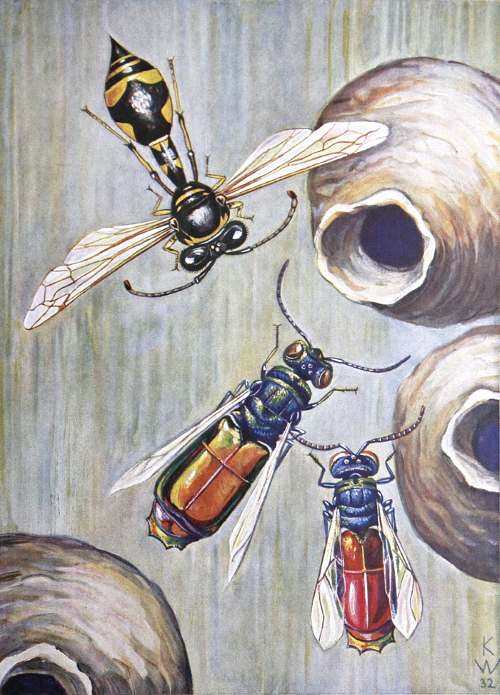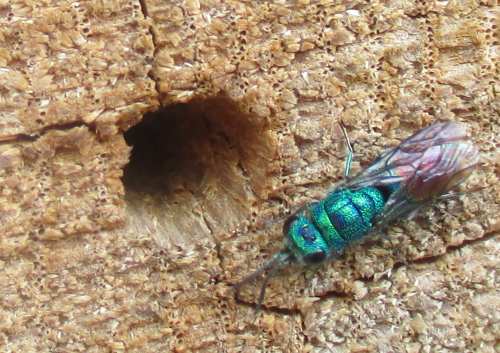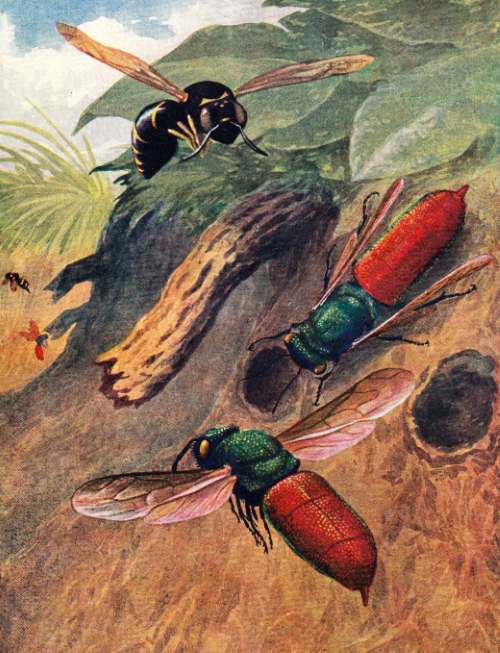ruby-tailed wasp
The Chrysis ignita is the most common of the cuckoo wasps. It has striking colors : a metalic red abdomen and a green-blue head and thorax, This wasps is called Cucckoo wasp as it puts its eggs in the nests of other bees and wasps.
ruby-tailed wasp and theire eggs
Ruby-tailed wasps lay their eggs in the nests of other solitary bees and wasps. They first checkout the entrance of the nest to make sure no one is home. If they are surprised by the owner, the ruby-tailed wasp can defend itself: It has a very smooth and strong armor to protect itself. Another way of protecting is to curl up into a ball. After the egg is laid the emerging larvae eat the host bee or wasp larvae. They leave the nest the next year as a full grown ruby-tailed wasp. Some solitairy wasps are frequently visited by the the ruby-tailed wasp:
Philanthus triangulum,
Cerceris ornata,
Ancistrocerus parietum,
Antilope spinipes,
Eumenes pomiformis

Eumenes coarctatus and Chrysis ignita, K. Wulfert "Kosmos" magazine, 1933. Eumenes coarctatus or Heath Potter Wasp constructs a pot from wet clay. These pots are placed against the stem of a plant. Once constructed the female wasp lays a single egg inside the pot and fills it with catarpillars and finally sealed. The egg will hatch and then the wasp grub will consume the anaesthetised caterpillars. Eventually it will pupate and then emerge from the pot the following year as an adult sexually mature wasp. But the ruby-tailed wasp will put an egg inside the pot: The larvae from the ruby-tailed wasp will hatch very vast and eat the larva of the Heath Potter Wasp. The it will feed on the anaesthetised caterpillars.

The ruby-tailed wasp waits at the entrance of the nest of a Vespidae, waiting for a Vespidae to leave.

The ruby-tailed wasp waits at the entrence: if the Wall Mason Wasp willclose its nest with a wall. Before the nest is sealed the ruby-tailed wasp deposits an egg. The larva will eat the other egg and feeds on the stored food that was collected by the Wall mason wasp. Next year an adult ruby-tailed wasp will leave the hole.
1 Ancistrocerus parietum, Wall Mason Wasp.
2 Polistes gallicus a paper wasp.
3 ruby-tailed wasp or Chrysis ignita

Chrysis ignita waiting for the entrance of a hole.
